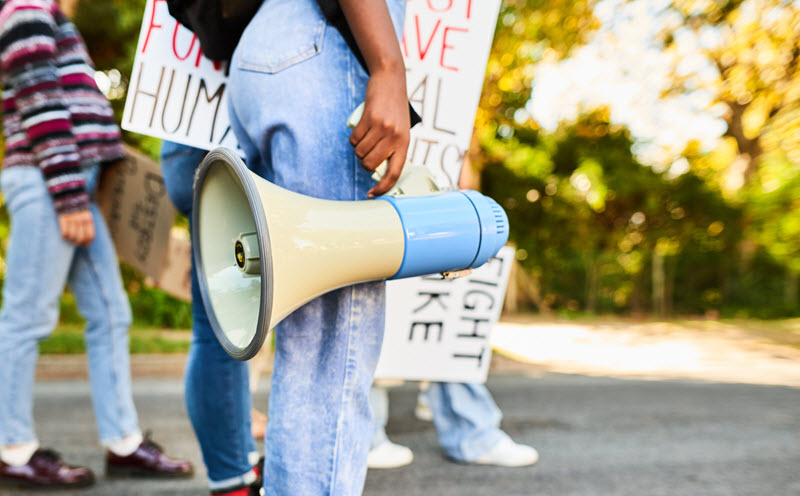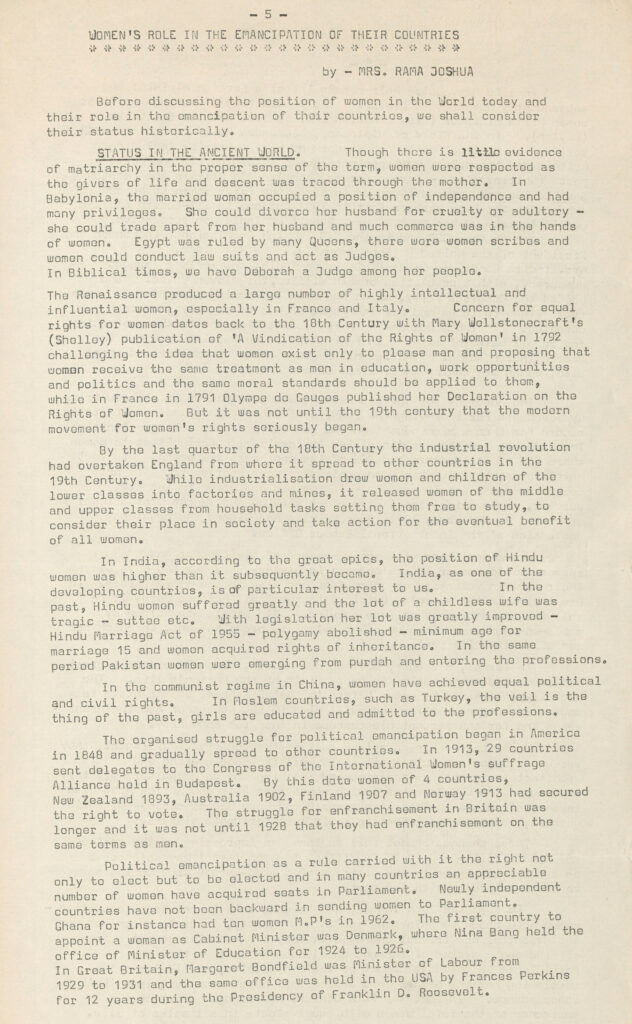| By Gale Staff |
In 1978, a group of education stakeholders in Sonoma County, California, planned the first “Women’s History Week.” Local teacher Molly Murphy McGregor spearheaded the initiative, integrating stories of empowering female accomplishments throughout her curriculum. Dozens of schools participated in the weeklong celebration, which included themed presentations, a student essay contest, and even a parade. Its success quickly spread, and in 1980, President Jimmy Carter officially declared the first full week in March as National Women’s History Week. By 1987, Congress expanded its observance and proclaimed all of March as “Women’s History Month.”
As you plan your library’s Women’s History Month celebration, we wanted to share a uniquely helpful resource within your Gale Primary Sources database—Women’s Studies Archive: Female Forerunners Worldwide. Released in March 2022, Female Forerunners Worldwide explores history from the perspective of female trailblazers from the mid-18th through the 20th century. The collection showcases first-person articles featuring global perspectives and major events and topics such as women’s health care, minority groups, women in politics, and women’s rights. Your whole campus will benefit from access to this special collection, especially those interested in history, women’s studies, and advancing a more inclusive campus for everyone.
Countless women have shaped the world, but their accomplishments don’t often carry the same gravitas as those of men. In honor of Women’s History Month, we created a timeline highlighting and honoring key female figures and their accomplishments. From the 1848 Women’s Rights Convention in Seneca Falls, New York, to the election of Kamala Harris as vice president of the United States in 2020, the fight for gender equality is an ongoing journey.
Creating a Timeline of Major Historical Events
Achieving equal rights is a long, multigenerational challenge with many untold characters and seemingly small events that lead to meaningful change. A timeline helps illustrate how women’s rights evolved across centuries. Your library users will hopefully learn something new from this exercise and better understand how one voice or one small act of courage can alter the course of history.
1776: The Founding Fathers draft the Declaration of Independence, but there are intelligent, outspoken women right at their side contributing ideas as well. Abigail Adams is an early advocate for equal rights, regardless of gender or race. She boldly encourages her husband to include all people in the proposed system of government, extending basic freedoms to all. Of course, her progressive views were tabled for another century, as women in the United States wouldn’t begin voting until 1870.
1792: Accomplished English writer Mary Wollstonecraft, publishes “A Vindication of the Rights of Woman.” In her essay, she argues for equal access to education, politics, and work opportunities, suggesting that women are just as important to society as men. Wollstonecraft’s work would later inspire early suffragists, including Susan B. Anthony.
Joshua, Rama. “Women’s Role in the Emancipation of Their Countries.” The Council Bulletin: National Council of Jewish Women, December 1977, 5+. Women’s Studies Archive (accessed January 9, 2024). https://link.gale.com/apps/doc/MPMAOW272346917/WMNS?u=seoblogs&sid=bookmark-WMNS&xid=cce77275.
1848: Elizabeth Cady Stanton, Lucretia Coffin Mott, Martha Coffin Wright, Mary Ann McClintock, and Jane Hunt organize the first Women’s Rights Convention, held in Seneca Falls, New York. Attendees launch the official U.S. women’s suffrage movement throughout the two-day conference. Similar conventions would continue through the U.S. for the next several decades.
1888: Representatives from women’s groups in the United States, Canada, India, the United Kingdom, Finland, Denmark, France, and Norway meet in Washington, DC, to form the International Council of Women (ICW). With the mission to advocate for international equal rights for women, the network helps to organize resources and create a global platform. The ICW is now based in Paris and remains active.
1890: The U.S. territory of Wyoming becomes a state. In 1869, Wyoming granted women the right to vote, making it the first state in the United States to recognize women’s suffrage. Over the next few years, several western states (Utah, Colorado, and Idaho) followed suit.
1893: New Zealand becomes the first nation to legalize universal women’s suffrage, though women still faced several inequalities, including work opportunities and political representation. Over the next 20 years, Australia, Finland, and Norway will grant women the right to vote.
1911: Austria, Germany, Denmark, and Switzerland observe the first celebration of International Women’s Day. Millions of people gather at rallies and advocate for women’s suffrage and equal opportunities between the genders.
1916: Jeanette Rankin, a social worker from Montana, becomes the first female member of the U.S. House of Representatives. Ironically, women in the United States do not yet have the universal right to vote. Representative Rankin helps advance women’s suffrage legislation, which successfully passes the House in 1918; however, the Senate ultimately vetoes the bill.
1920: The U.S. 19th Amendment successfully passes. The women’s suffrage movement achieves its goal and the 19th Amendment is passed. However, voting rights are not yet universal. Congress continues to deny Native American and Asian women voting rights for several more years, and many states pass laws that keep black women from the ballot box.
1945: Through World War II, women worldwide help fill new roles left empty by men called to fight. Women have a chance to prove they were just as capable in the workforce and as valuable to the economy as their male counterparts. One article from 1943’s The Nursing Record, a London-based healthcare publication, encourages women to “play a bigger part in shaping the post-war world.” While many women return to their traditional responsibilities following the war, many others remain in the workforce.
“Women in the Post-War World.” The Nursing Record 91, no. 2096 (1943): 35. Women’s Studies Archive (accessed January 9, 2024). https://link.gale.com/apps/doc/XXYHVI427034745/WMNS?u=seoblogs&sid=bookmark-WMNS&xid=d300dbb0.
1975: The United Nations holds the First World Conference on Women in Mexico City. At the conference, the U.N. General Assembly sets an agenda to advance women’s rights worldwide, proclaiming that the next ten years are the United Nations Decade for Women: Equality, Development, and Peace. Users can find fascinating commentary following the 1975 U.N. conference, suggesting “varied views” on its value. The U.N. holds three subsequent conferences over the next 20 years. Beijing hosts the fourth and final Conference on Women in 1995. The Beijing Declaration and the Platform for Action remains a significant international document for gender equality standards.
The women’s rights movement has made undeniable progress, especially throughout the 20th century. However, women are still underrepresented in leadership around the world and, in many nations, still lack fundamental human rights. Sharing a timeline of women’s rights through Gale Primary Sources provides a special connection with the voices of the past and demonstrates the importance of activism and social justice. This March, leverage the stories and lesser-known role models from this one-of-a-kind collection to inspire ongoing progress and advocacy on your campus.
Excited to learn more? Contact your local sales representative for additional information.



